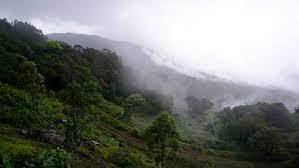
The India Meteorological Department (IMD) on Tuesday announced that the southwest monsoon is likely to arrive in Kerala within the next four to five days, marking an earlier onset than the usual June 1 date. Earlier forecasts had predicted the monsoon’s arrival by May 27, but current conditions suggest it could set in even sooner.
If the monsoon arrives as expected, this will be the earliest onset over the Indian mainland since 2009, when the rains began on May 23, according to IMD historical data.
“Conditions are likely to become favourable for monsoon onset over Kerala during the next 4-5 days,” the IMD said in a statement released Tuesday afternoon.
Typically, the southwest monsoon hits Kerala by June 1 and progresses to cover the entire country by July 8. The retreat of the monsoon usually starts around September 17 from northwest India and completes by October 15.
In recent years, the monsoon onset over Kerala occurred on May 30 (2024), June 8 (2023), May 29 (2022), June 3 (2021), June 1 (2020), June 8 (2019), and May 29 (2018).
The IMD’s April forecast indicated an above-normal cumulative rainfall for the 2025 monsoon season, ruling out the likelihood of El Niño conditions, which often cause below-normal rainfall in the Indian subcontinent.
The IMD classifies rainfall as ‘normal’ when it ranges between 96% and 104% of the 50-year average of 87 cm. Rainfall below 90% is considered ‘deficient,’ between 90% and 95% as ‘below normal,’ between 105% and 110% as ‘above normal,’ and anything over 110% is ‘excess’ precipitation.
The timely arrival and adequate distribution of the monsoon are crucial for India’s agriculture, which supports the livelihood of approximately 42.3% of the population and contributes around 18.2% to the country’s GDP. Additionally, the monsoon replenishes reservoirs vital for drinking water and power generation across the nation.
Farmers, policymakers, and citizens alike will be closely watching the monsoon’s progress in the coming days as India prepares for the essential rains that sustain millions of livelihoods and the broader economy.
Sources By Agencies




